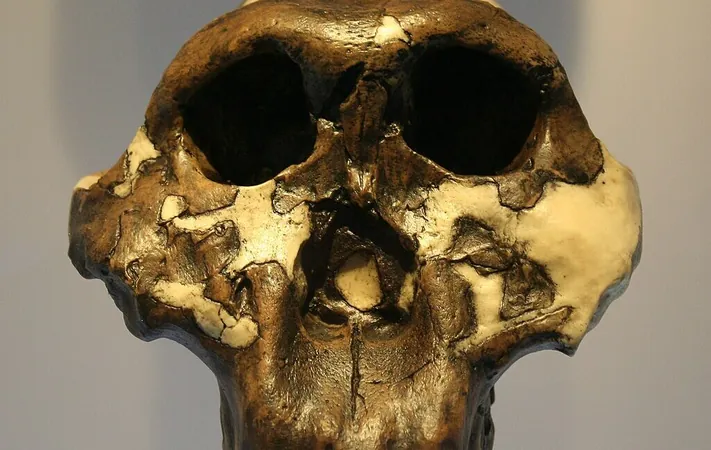
Unlocking the Secrets of Our Ancestors: Ancient Proteins Reveal New Insights into Paranthropus Robusts
2025-05-29
Author: Ken Lee
Ancient DNA's Limits and a New Frontier
For years, ancient DNA has been a powerful tool in unraveling the intricate tapestry of human ancestry, shedding light on our connections with Neanderthals and unveiling the existence of elusive Denisovans. Yet, time takes its toll—DNA degrades, especially in the harsh conditions of Africa, limiting our understanding of early hominin species. But what if we could bypass these limitations?
A Breakthrough in Protein Analysis
Enter a groundbreaking study by an international team of researchers who have pioneered a method to glean genetic information from ancient remains dating back nearly 2 million years. By extracting enamel proteins from Paranthropus robustus teeth, they set out to ascertain species classification despite notable size discrepancies among fossilized remains.
The Paranthropus Puzzle
Paranthropus robustus, a hominin that roamed the earth between 2 to 3 million years ago, presents a puzzling case. Coexisting with australopithecine and early Homo species, Paranthropus exhibits such variation in size that some have proposed sexual dimorphism as the cause. But testing this theory has proved troublesome—until now.
Mass Spectrometry to the Rescue
Researchers leveraged mass spectrometry to dive deep into the composition of tooth enamel proteins, which possess a remarkable resilience to degradation. This sensitive technique can discern specific isotopes allowing scientists to match protein fragments to known compositions, effectively reviving ancient genetic data.
A Promising Discovery
The team focused their efforts on samples excavated from South Africa’s renowned Cradle of Humankind World Heritage Site. Their analysis identified six robust proteins common across all four teeth inspected, despite them only being fragments. Verification followed in another lab in Cape Town, confirming the authenticity of the ancient proteins.
Decoding Gender Through Proteins
Among the vital clues was the discovery of AMELY, a male-specific enamel protein linked to the Y chromosome. This revelation allowed researchers to debunk assumptions regarding sexual dimorphism within the species. What was presumed to be a female tooth was confirmed as male, shifting the paradigm on how size variations might be interpreted.
Unraveling Evolutionary Relationships
Additionally, the study's findings opened avenues to differentiate species within the Paranthropus genus, which previously had unclear classifications. Notably, 16 amino acid locations were identified that differed across hominin species, paving the way for future research to clarify evolutionary linkages.
Moving Forward in Hominin Research
While the current dataset remains limited, hinting at Paranthropus robustus as closely related to our own Homo genus, this is merely a stepping stone. Enrico Cappellini, one of the study's senior authors, emphasizes that ongoing research will enhance our understanding of extinct hominins.
A Horizon of New Discoveries Awaits
As these innovative techniques evolve, they could revolutionize our comprehension of human ancestry. Each ancient sample is a window into a collective history that is both fragile and invaluable—signaling that our quest for understanding our roots has just begun.



 Brasil (PT)
Brasil (PT)
 Canada (EN)
Canada (EN)
 Chile (ES)
Chile (ES)
 Česko (CS)
Česko (CS)
 대한민국 (KO)
대한민국 (KO)
 España (ES)
España (ES)
 France (FR)
France (FR)
 Hong Kong (EN)
Hong Kong (EN)
 Italia (IT)
Italia (IT)
 日本 (JA)
日本 (JA)
 Magyarország (HU)
Magyarország (HU)
 Norge (NO)
Norge (NO)
 Polska (PL)
Polska (PL)
 Schweiz (DE)
Schweiz (DE)
 Singapore (EN)
Singapore (EN)
 Sverige (SV)
Sverige (SV)
 Suomi (FI)
Suomi (FI)
 Türkiye (TR)
Türkiye (TR)
 الإمارات العربية المتحدة (AR)
الإمارات العربية المتحدة (AR)